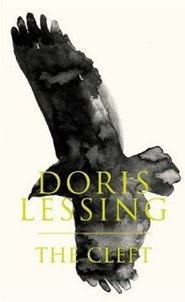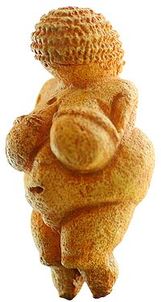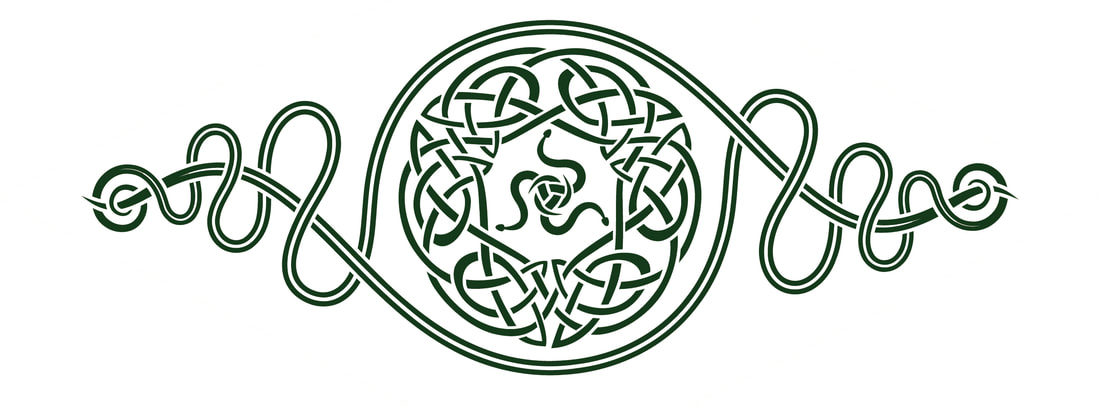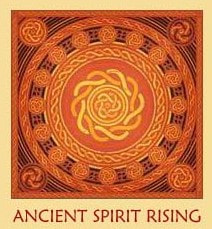REVIEW BY PEGI EYERS
With the passing of Nobel prize-winner Doris Lessing into the spirit world this week, we are reminded once again of her literary genius in storytelling, that transverses the multiple worlds of ideology, allegory and imagination. In defiance to the hegemony and dystopia of colonialism, she once claimed that all people "are being manipulated by great social currents," and her deconstructions of Empire were legendary. Lessing refused to allow the Queen to declare her a Dame of the British Empire, because - in the author's words - "There is no British Empire."
Written in 2009, The Cleft is an alternative origin story for the human race, a speculative look at how ancient peoples became divided into female or male gender, and developed individuality and free will. I find the primordial world evoked by Doris Lessing, and her hypothesis that the female gender predated the male, fascinating and believable. (Spontaneous conception - why not?) Known as parthenogenesis, in addition to the Virgin Birth of Christ, there are many examples throughout history of women conceiving and giving birth without male participation or fertilization.
The Cleft sets the scene "in the beginning" when the cultural group was female, an amorphorous, chthonian mass, living in and out of warm caves and rocky pools at the edge of the sea, a soft-edged, slow-brained tribe focused on feminine reproductive cycles and animal sensation. The interplay between these ancient humans and the elemental forces of earth, fire, water, and the wild nature spirits around them, is poetic and inspiring.
The appearance of baby boys ("squirts") into this ancient matriarchy brings the missing principle, the active "yang," that actuates the potential of the feminine, into the world. That these female creatures were generally obese ("their flesh all about them in layers of fat, shapeless things lolling about, sea slugs enclosed by skins of jellified water") makes me think that Lessing may have stumbled upon a scientific fact, that there must be an ancient "obesity gene." This would explain why some people cannot lose weight no matter how hard they try! The Cleft allows us to speculate that the flabby, waddling, manatee-like "Old Shes" may be the ancient Ancestors of those descended from a particular DNA pool or region of Old Europe.
Lessing employs a classic framing device to give voice to her story. During Nero's rule, a Roman senator who is also a historian is working through "a mass of material accumulated over the ages," pertaining to a prehistoric all-woman tribe. Unfortunately, I have a problem with this narrator - how could such a compassionate, humble, perceptive and sensitive man be a product of the militarized patriarchy that was Rome? Impossible, I am thinking. However, by a master of speculative fiction, myth and fable, The Cleft is a fascinating read, especially for those who study ancient matriarchies and/or honor the Divine Feminine.
Written in 2009, The Cleft is an alternative origin story for the human race, a speculative look at how ancient peoples became divided into female or male gender, and developed individuality and free will. I find the primordial world evoked by Doris Lessing, and her hypothesis that the female gender predated the male, fascinating and believable. (Spontaneous conception - why not?) Known as parthenogenesis, in addition to the Virgin Birth of Christ, there are many examples throughout history of women conceiving and giving birth without male participation or fertilization.
The Cleft sets the scene "in the beginning" when the cultural group was female, an amorphorous, chthonian mass, living in and out of warm caves and rocky pools at the edge of the sea, a soft-edged, slow-brained tribe focused on feminine reproductive cycles and animal sensation. The interplay between these ancient humans and the elemental forces of earth, fire, water, and the wild nature spirits around them, is poetic and inspiring.
The appearance of baby boys ("squirts") into this ancient matriarchy brings the missing principle, the active "yang," that actuates the potential of the feminine, into the world. That these female creatures were generally obese ("their flesh all about them in layers of fat, shapeless things lolling about, sea slugs enclosed by skins of jellified water") makes me think that Lessing may have stumbled upon a scientific fact, that there must be an ancient "obesity gene." This would explain why some people cannot lose weight no matter how hard they try! The Cleft allows us to speculate that the flabby, waddling, manatee-like "Old Shes" may be the ancient Ancestors of those descended from a particular DNA pool or region of Old Europe.
Lessing employs a classic framing device to give voice to her story. During Nero's rule, a Roman senator who is also a historian is working through "a mass of material accumulated over the ages," pertaining to a prehistoric all-woman tribe. Unfortunately, I have a problem with this narrator - how could such a compassionate, humble, perceptive and sensitive man be a product of the militarized patriarchy that was Rome? Impossible, I am thinking. However, by a master of speculative fiction, myth and fable, The Cleft is a fascinating read, especially for those who study ancient matriarchies and/or honor the Divine Feminine.
| Pegi Eyers is the author of Ancient Spirit Rising: Reclaiming Your Roots & Restoring Earth Community, an award-winning book that explores strategies for intercultural competency, healing our relationships with Turtle Island First Nations, uncolonization, recovering an ecocentric worldview, rewilding, creating a sustainable future and reclaiming peaceful co-existence in Earth Community. Amazon.com Stone Circle Press |




